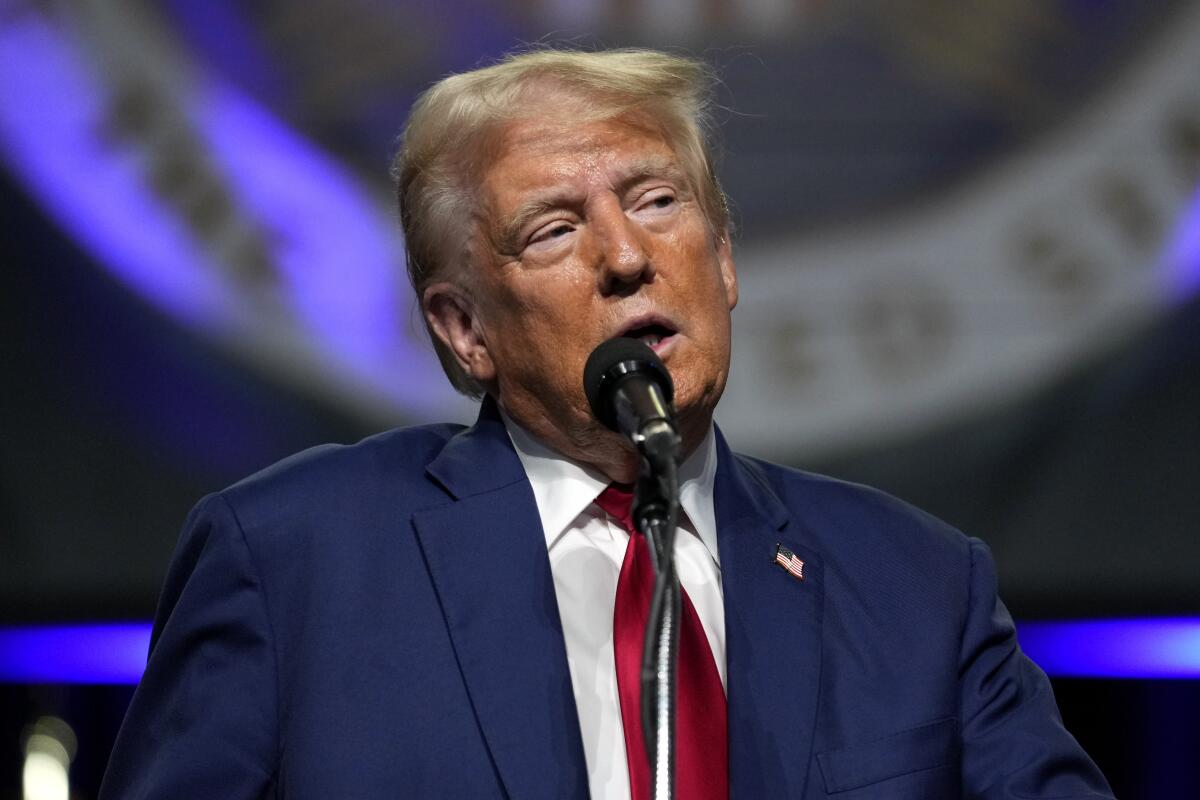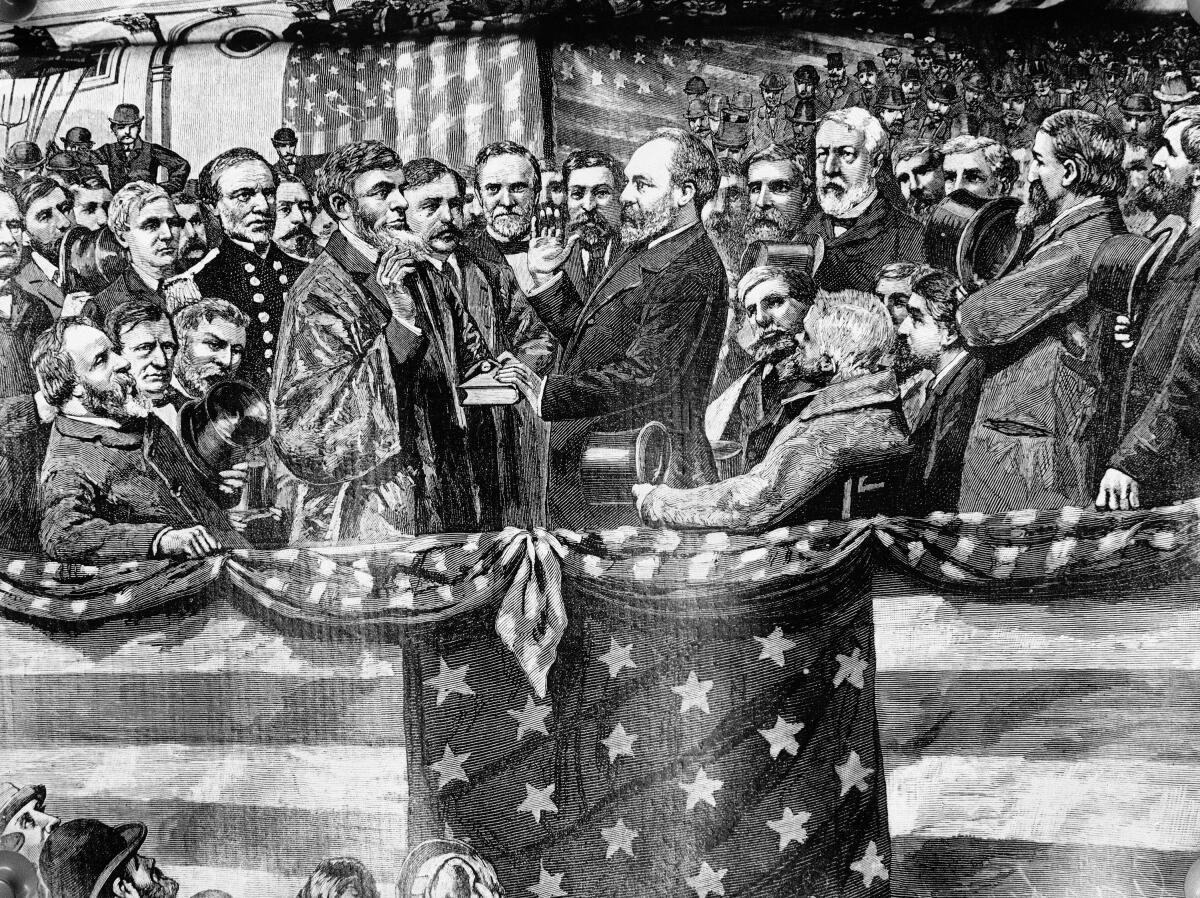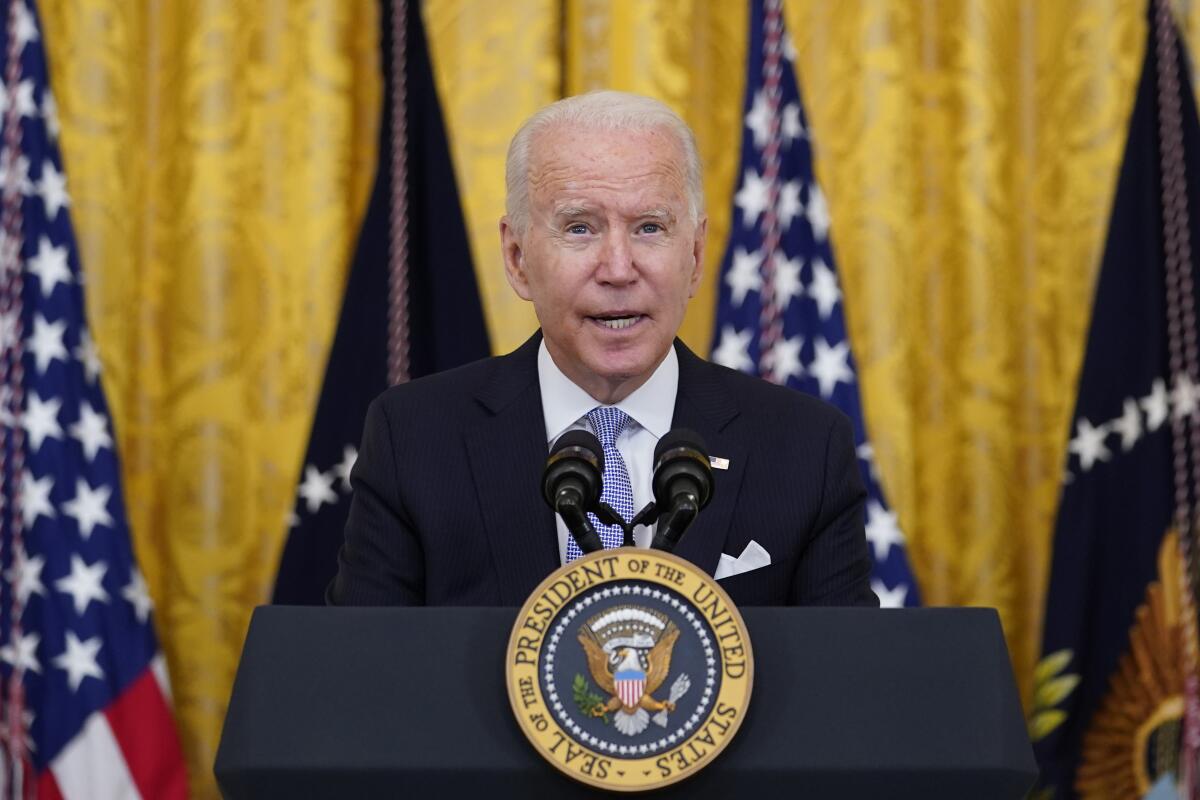Trump’s vow to fire thousands of ‘crooked’ federal workers prompts alarm

After one term as president in which his promise to remake the massive federal government mostly came up short, Donald Trump again is raining fury on the “deep state,” pledging if elected in November to replace career civil servants with his like-minded allies.
If Trump and Republican vice presidential nominee JD Vance were to succeed in remaking the federal workforce in the way they have described, it would be the most radical reconfiguration of the U.S. government in 140 years.
Critics, including nonpartisan analysts, fear Trump’s proposal to replace thousands of civil servants with his loyalists would resurrect something like the 19th century “spoils” system, which Congress scrapped in the late 1800s due to rampant incompetence and cronyism.
The U.S. operated for much of the 1800s on the understanding that individuals won jobs with the government not by proving their expertise, but by having connections to presidents and their parties.
Congress moved to eliminate the spoils system in 1883, about 18 months after a disgruntled job-seeker assassinated the man he believed owed him a government appointment — James A. Garfield, the 20th president of the United States.

“You’re now talking about 140 years of presidential administrations — Republicans and Democrats — who all supported the proposition that the best way to get an effective government was to have a career, professional, merit-based civil service,” said Max Stier, president of the Partnership for Public Service, a nonprofit that analyzes federal agencies and their employees. “So the idea that we would convert that, or return to a 19th-century-style spoils system, is a huge anomaly. It’s a radical change.”
Trump has made clear he does not intend to be dissuaded by those who have worked within the government before. The Republican presidential candidate recently offered his emphatic endorsement of a housecleaning when a YouTube personality asked whether he would restore trust in government by holding federal workers “accountable.”
“They’ve got to be held accountable,” Trump said. “They’re destroying this country. They’re crooked people. They’re dishonest people.”
The former president has made clear his disdain for the FBI, federal prosecutors and others who investigated him over his efforts to remain president after he lost the 2020 election — among other things. But he has said little about others he might consider “crooked,” or which agencies and job categories he would target in a federal workforce of more than 2 million.
Would those ousted include scientists and engineers who support clean energy programs — such as wind and solar power and electric vehicles — that Trump has ridiculed? Would economists at the nonpartisan Bureau of Labor Statistics find themselves on the street if they were to produce numbers the businessman did not like?
In past statements and an executive order issued while he was in office, Trump demonstrated that he hopes to exert control over a large swath of the government workforce, not merely the roughly 4,000 employees traditionally subject to presidential appointment.
In the waning months of his tenure, Trump created a category of employees deemed to have some say over policy. The Republican administration asked all federal agencies to report back which employees should be placed on a new “Schedule F” that would classify them as at-will employees who can quit or be fired at any time, for any reason.

But Trump left office before Schedule F could be completed and veteran civil servants ejected. President Biden reversed the policy shortly after taking office. And federal regulations approved this spring attempt to make it harder for Trump or any future president to expand the universe of workers who can be canned so easily.
Some analysts had estimated that Schedule F could threaten the positions of tens of thousands of workers. The American Federation of Government Employees (or AFGE), representing 750,000 workers across many unions, said the Trump policy would erase employee protections for up to half a million senior managers, high-level technical specialists, physicians and others.
Those senior workers would not only lose collective bargaining rights laid out in the law, but the change would eviscerate “the apolitical, merit-based system we have today” and replace it with “a corrupt spoils system,” Jacque Simon, AFGE’s public policy director, said in a union publication.
Multiple think tanks and a prominent nonprofit have taken a different approach than Trump’s by trying to reform and strengthen the civil service.
For more than two decades, Stier’s nonpartisan Partnership for Public Service has trained and supported federal employees, believing that better workers improve the quality of government. The nonprofit gives annual Service to America awards, a coveted recognition among those who help the public through their work.
This year finalists include Christopher Mark of the Mine Safety and Health Administration, whose research has saved an untold number of lives by helping improve the design and construction of underground mines. Another federal worker recognized: Tara McHugh, nicknamed “The Willy Wonka of Healthy Foods,” a Department of Agriculture researcher based in Albany, Calif., who helps companies bring more nutritious products to market.
Though Trump’s specific targets remain hazy, the Project 2025 report, whose authors include many of his allies and former aides, suggests a few. One is the Clean Energy Corps project launched under the Bipartisan Infrastructure Law to improve distribution of electricity from sources like wind turbines and solar arrays.
Project 2025 called that “a partisan political agenda” and suggested revoking funding and “eliminating all positions and personnel hired under the program.” With the end of the infrastructure funding, many of those jobs have been absorbed into the broader Department of Energy.
That theoretically could put on the chopping block people like Evan Berry, a communications specialist and language whiz whose work helps the Spanish-speaking residents of Puerto Rico understand federal programs to strengthen the notoriously weak electrical grid on the island territory. Power outages, particularly after multiple hurricanes, have put in peril lifesaving medical devices.
“It’s disheartening to see something like our energy infrastructure coming under attack in a partisan way,” said Berry, hired under the Clean Energy Corps and now an employee with the Energy Department. “At its core, we all need this infrastructure for our society and for our economy to function. What better way to achieve that than through some of the most reliable technologies out there, like renewable energy.”
On his campaign website, Trump promises that he would use a second term to reignite his campaign against government workers.
“On Day One, re-issue 2020 executive order restoring the president’s authority to fire rogue bureaucrats,” says the 10-point pledge in what he calls his Agenda 47. “I will shatter the Deep State, and restore government that is controlled by the People.”
Suggesting that what he calls the “swamp” is part of the problem, Trump also promises “up to 100,000 government positions could be moved out of Washington.”
Trump made an initial stab at decentralization in his first term. His administration ordered two units of the Agriculture Department — the National Institute of Food and Agriculture and the Economic Research Service — out of the nation’s capital.
The two agencies, whose duties include gathering information to help farmers adjust to changing markets, moved most operations to Kansas City, Mo.
But more than half of their employees refused to make the move, leading to “a significant loss of institutional knowledge, talent, and diversity on staff,” a USDA spokesperson said. Over the last three years, an intensive hiring effort helped fill the gap and the spokesperson said the two departments are now “nearing or exceeding the number of full time employees from before the move.”
Vance shares Trump’s bleak view of those who enter civil service for the U.S. government. As a Senate candidate, he told a podcaster in 2021: “I think that what Trump should do, if I was giving him one piece of advice: Fire every single midlevel bureaucrat, every civil servant, in the administrative state; replace them with our people.”
Democrats have suggested the courts might thwart such a revolutionary move. But Vance invoked the defiant words of President Andrew Jackson to imply that the next Trump administration might reject judicial authority.
“And when the courts stop you, stand before the country, and say, ‘The chief justice has made his ruling; now let him enforce it,’” Vance said, paraphrasing Jackson.
In an interview this week with YouTube personality Shawn Ryan, a former Navy SEAL, Trump boasted that he would be better at rooting out those he deems “weak” or not properly attuned to his MAGA worldview.
“I know the system. I know the people,” the former president said. “And so now I’m a very experienced guy, and we’re going to bring our country back.”
Federal agencies suffered a blow to their authority in July when the conservative majority of the Supreme Court — which Trump cemented with his appointees — overturned the “Chevron deference.” The four-decade-old precedent had allowed federal workers to interpret how to implement legislative details on which Congress was silent or unclear.
Court watchers viewed the decision as a huge win for big business.
Stier, who once clerked for Supreme Court Justice David H. Souter and served as a lawyer for the Department of Housing and Urban Development, called the decision “a tough blow to public service.” The ruling moved authority to judges and away from agency experts, he said, even those in highly technical fields who provide oversight on weapons of mass destruction, cybersecurity and biohazards.
“The Supreme Court ... has been undermining the ability of the administrative state at a time it is being called on to deal with the complex and sometimes dangerous set of challenges that we face in our world today,” Stier said.
It took the assassination of a president to finally end the cozy, back-scratching world of presidential appointments.
Charles Guiteau believed he would finally make his mark with a government position based on his work for the Republican Party — and became convinced Garfield would acknowledge his support. He zeroed in on an assignment at the U.S. Consulate in Paris, though he had no experience in the foreign service.
But the appointment never came. And a furious Guiteau began stalking the president, a former Civil War general whose problem with the spoils system went well beyond Guiteau. Garfield quickly took a stand in the White House by challenging a powerful U.S. senator and influence-peddler who thrived on such patronage. (The system even required those rewarded with jobs to kick some of their salaries back to their political parties.)
Garfield had been in office about four months when Guiteau fired two shots that mortally wounded the president as he walked through a Washington train station. Guiteau fantasized that a sympathetic country would revere him for his actions. Instead, he was hanged for murder.
Seventeen months later, President Chester A. Arthur signed the Pendleton Act, which replaced the spoils system with a civil service. It required minimum qualifications and forbade political kickbacks, and eventually would lead to objective testing for many job applicants.
The next 22 presidents would leave the basic principles of the civil service intact. That changed when Trump took office.
More to Read
Get the L.A. Times Politics newsletter
Deeply reported insights into legislation, politics and policy from Sacramento, Washington and beyond. In your inbox three times per week.
You may occasionally receive promotional content from the Los Angeles Times.











